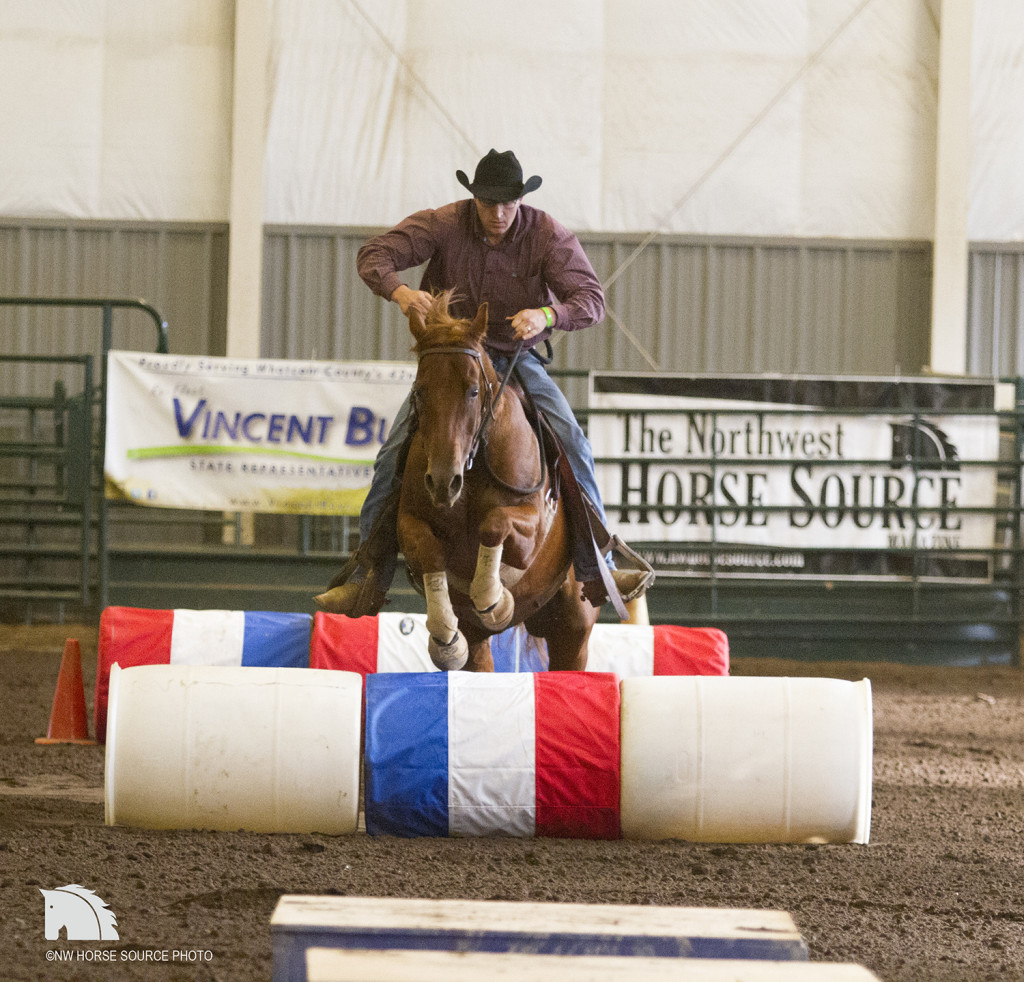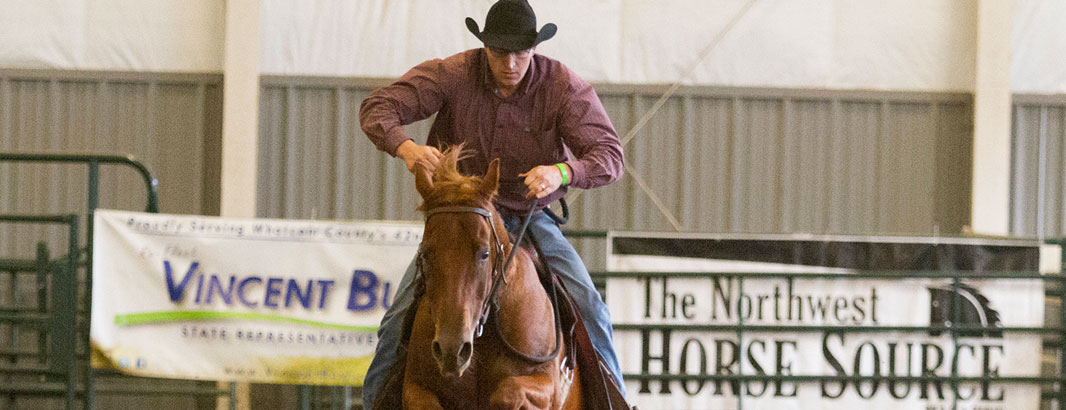Part 3: Navigating Common Obstacles
by Brent Rollins

In my last article I revealed some tips for greatly improving your cowboy race. In this article I will give advice on how to approach and execute some of the common obstacles you’ll encounter. Also, I will tell you how they are scored and some possible scenarios. I hope this will improve your confidence.
The first obstacle is the most common: Barrel Jumps
This obstacle consists of 3, 50 gallon drums lined up on their sides. It can have 3 to 4 jumps in succession, 25 to 30 feet apart. The best way to approach these is at a speed you are used to. This should be faster than a walk for your horse to have enough momentum to jump them without hesitation. Remember, you are judged on approach and departure of each obstacle. Aim for the middle of the jump and look ahead, not down. Keep your hands forward in the jump and when landing don’t choke up on your horse for proper execution. A rider that trots but clears all jumps with good cadence and rhythm will score higher than a faster rider that rushes and/or knocks the barrels out of position. Speed is important, but a safe clean run is more important. I always tell myself to “hustle, don’t hurry.”
The next obstacle is one that is most associated with the race: The Cowboy Curtain
It consists of either rope or plastic strips hung high enough for safe entry and exit and is 7 to 10 feet wide. Every curtain is different. The best approach here is a smooth entry (without hesitation) and an exit that moves on to the next obstacle as if the curtain wasn’t even there. Keep a loose rein and your horse’s head low. Lope for a high score. A rider that approaches at a lope, but the horse stops to inspect the curtain before calmly walking through will get a higher score than a rider that approaches at a lope, the horse stops and the rider rushes the horse making it leap through the curtain. In either scenario it would be better if the horse did not stop at all as that is scored as the “approach.” Each obstacle has a possible 10 points: 1 for approach, 8 for the obstacle itself and 1 for departure.
Another common obstacle is: A Bridge
The bridge may be no taller than 24 inches in height and be made of sturdy material. The best way to get a good score on the bridge includes a low head, the horse looking where he is going, and crossing the full length of the bridge without stepping off. Try to cross at a decent speed, but don’t lope as that is not safe. It is good, however, to jog over the bridge if your horse navigates it completely. Perhaps a confident, fast rider jogs easily over the bridge, but in the departure his horse trips. The rider that jogs slowly onto the bridge, stops in the middle, takes one or two steps back showing confidence, then allows the horse to lower its head and step off safely would get a slightly higher score. The first rider’s mistake would not be a major deduction, but the idea is “speed with control.”
My last obstacle is the most exciting and fun: The Free Ride
This is judged completely on speed and control. The free ride can be just a high speed run around the perimeter of the course or be directed into a certain pattern or order. It depends on the course and division. The free ride is complimented by upbeat music which, for some horses, adds to the difficulty. Keep speed in mind, but don’t forget control. Some horses are fast and easily get out of control. Other horses are slow and take some convincing to hustle. With the fast horse I suggest rating, don’t just pull and keep pulling. Pull and release, then repeat, to slow your horse down. If your horse is slow, take what you can get. Loping is better than walking. Also, don’t kick or whip your horse excessively as this will reduce your score for roughness. Correct leads are also very important here, not only for take-off but during the ride. A fast rider on the wrong lead, with good control but a tight rein, will get a lower score than a slower rider on the correct lead with loose reins and good body position.
I hope this has helped some future competitors. Good luck and happy racing.
Brent Rollins is one of the industry’s leading experts on mustangs. He has been called the “mustang whisperer” by Craig Cameron. Brent is an EXCA cowboy race judge, and Craig Cameron certified Trainer. Brent travels Oregon, Washington and California giving clinics and expos, promoting the mustang and their versatility. He educates adopters and potential adopters on what to expect with their new mustang and deals with misconceptions regarding mustangs and domestic horses. He also helps with problem horses. Brent believes that every horse deserves a chance to be great. For more information about Brent and his program visit www.brhorsemanship.com.






